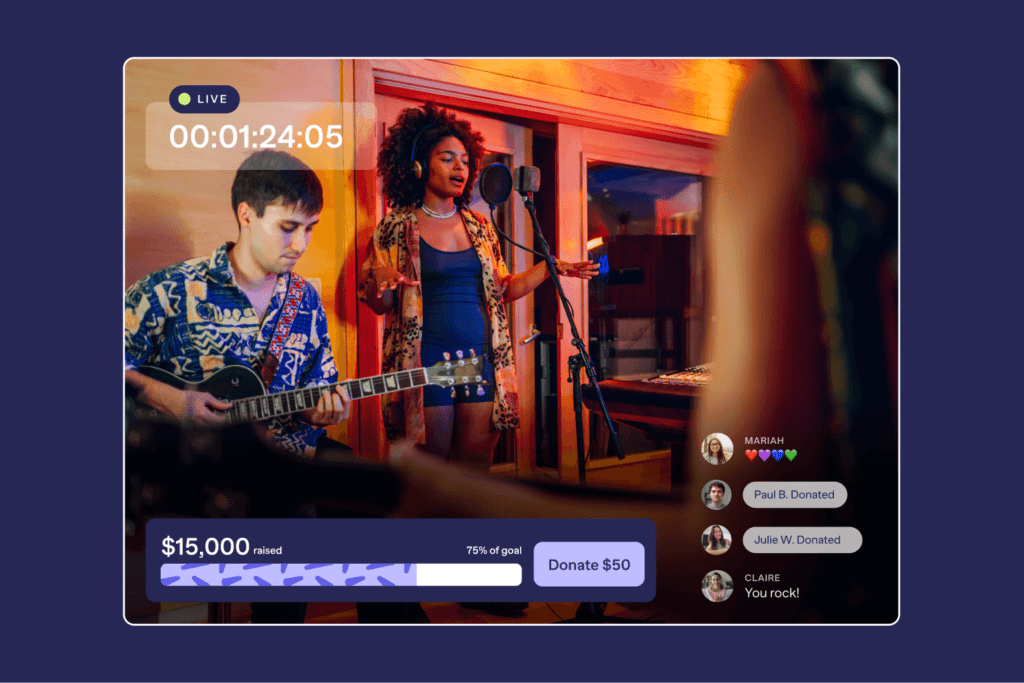School fundraising is more than just a way to gather funds; it’s the heartbeat of schools, non-profits, and community organizations, fueling their incredible causes and transformative projects. Imagine the joy of seeing a new library being built in your local school, or witnessing a non-profit organization expand its reach to help more people—all made possible through effective online school fundraising.
But here’s the kicker: successful fundraising isn’t just about asking for money. It’s about being savvy and strategic, understanding the fine line between what you need to invest initially and what you can expect to gain in return. It’s like planting a garden—some seeds need more care and resources upfront, but they can yield a bountiful harvest.
In this blog, we’re embarking on a fun and insightful journey into the world of fundraising methods. We’ll break down the different approaches based on their initial costs and potential returns, giving you a clearer picture of where to put your efforts. Ever wondered which fundraising activities might be the most rewarding? Or which ones require the biggest upfront investment? We’ve got you covered!
Importance of balancing costs and returns
Understanding the balance between costs and returns is crucial for several reasons:
- Resource allocation: Knowing which activities require significant upfront costs helps in budgeting and resource allocation.
- Risk management: Higher upfront costs can mean higher risks. Understanding these risks allows for better planning and risk mitigation.
- Maximizing returns: Identifying activities with lower costs but high returns can significantly boost your overall fundraising success.
Now, let’s dive into the different types of fundraising activities and examine their costs and potential returns. Please remember certain online fundraising solutions may have different and additional fees that need to be considered. All profits and breakdowns below are general estimates and will vary according to your chosen fundraising solution and specific fundraising approach.
Fundraising Activities breakdown
1. Raffles
A Raffle is a fundraising activity where participants purchase tickets for a chance to win prizes. The winners are drawn randomly.
Example Scenario:
- Raffle setup: A school organizes a Raffle with donated prizes valued at $500.
- Upfront costs: Ticket printing and distribution could cost $100.
- Ticket sales: 500 tickets sold at $5 each.
- Revenue: Total revenue generated is $2,500.
- Net profit: After deducting $100 in printing costs, the net profit is approximately $2,400 (if you have other upfront costs/expenses this number would vary).
Potential returns: Raffles can potentially generate high returns if the prizes are attractive and well-promoted.
Best practices:
- Attractive prizes: Secure valuable prizes through donations to reduce costs.
- Peer-to-Peer: Expand your reach by adding Peer-to-Peer to your fundraiser.
- Extensive promotion: Promote the Raffle extensively through social media and community channels.
- Broad sales reach: Sell tickets both online and offline to reach a wider audience.
Suitable for: Community organizations, schools, sports teams, and non-profits looking to engage a wide audience.
2. Auctions
An Auction is an event where items or services are sold to the highest bidder. It can be conducted live, silently, or online.
Example scenario:
- Auction setup: An art museum hosts an Auction featuring donated artwork and experiences.
- Upfront costs: Venue rental and marketing costs total $2,500.
- Sales: 50 items sold, averaging $500 each.
- Revenue: Total revenue generated is $25,000.
- Net profit: After deducting $2,500 in costs, the net profit is $22,500.
Potential returns: Auctions can be highly profitable, especially if items are donated.
Best practices:
- High-value items: Solicit valuable items for Auction to attract higher bids.
- Online platforms: Utilize online Auction platforms to reach a wider audience.
- Auction Gifts: Find online fundraising platforms (like RallyUp Schools) that offer features like Auction Gifts where donors can choose to donate regardless of whether they win or not.
- Multi-channel promotion: Promote the event through social media, email campaigns, and local media.
Suitable for: Museums, schools, charities, and non-profits with access to high-value donated items or experiences.

3. Sweepstakes
A Sweepstakes is a fundraising activity where participants enter for a chance to win a prize, often requiring a donation to enter.
Example scenario:
- Sweepstakes setup: A non-profit organization launches a Sweepstakes offering a new car valued at $25,000, donated by a local dealership.
- Upfront costs: Marketing costs $1,000.
- Entries: 5,000 entries at $10 each.
- Revenue: Total revenue generated is $50,000.
- Net profit: After deducting $1,000 in marketing costs, the net profit is $49,000.
Potential returns: Sweepstakes can yield substantial returns, especially if the prizes are desirable.
Best practices:
- Desirable prizes: Offer prizes that appeal to a broad audience.
- Peer-to-Peer: Expand your reach by adding Peer-to-Peer to your fundraiser and have your supporters raise more funds for you.
- Legal compliance: ensure compliance with legal requirements.
- Effective promotion: Leverage social media and email marketing.
Suitable for: Non-profits, schools and charities with access to desirable prizes and a broad donor base.
4. A-Thons (e.g., Walk-A-Thons, Read-A-Thons)
A-Thons are events where participants perform an activity (e.g., walking, reading) for a specified duration or distance and collect pledges for their participation.
Example scenario:
- A-Thon Setup: A school organizes a Walk-A-Thon where students collect pledges for each mile walked.
- Upfront costs: Marketing and participant incentives cost $500.
- Participation: 100 participants, each raising $100.
- Revenue: Total revenue generated is $10,000.
- Net profit: After deducting $500 in costs, the net profit is $9,500.
Upfront costs:
- Event planning and coordination: Organizing the event.
- Marketing and promotion: Materials to attract participants.
- Participant incentives: Rewards for participants.
Potential returns: A-thons typically have moderate upfront costs but can generate significant returns.
Best practices:
- Wide network: Encourage participants to seek pledges from a broad network.
- Incentives: Provide incentives like prizes, leaderboards and recognition for top fundraisers.
- Tracking: Use online platforms to track progress and donations.
Suitable for: Schools, youth organizations, and community groups looking to engage participants actively.
5. Crowdfunding
Crowdfunding is a fundraising method where individuals donate small amounts of money online to support a specific project or cause.
Example scenario:
- Crowdfunding setup: A community group starts a Crowdfunding campaign to build a new playground.
- Upfront costs: Platform fees and marketing cost $500.
- Donations: 200 donors, averaging $50 each.
- Revenue: Total revenue generated is $10,000.
- Net Profit: After deducting $500 in costs, the net profit is $9,500.
Potential Returns: Crowdfunding can be highly effective, leveraging social media to reach a vast audience.
Best Practices:
- Compelling narrative: Create a compelling story to engage donors.
- Peer-to-Peer: Expand your reach by adding Peer-to-Peer to your fundraiser. This will encourage supporters to raise funds on your behalf!
- Social media: Utilize social media and email marketing.
- Regular updates: Keep supporters informed of progress.
Suitable for: Any organization or cause that can leverage social media and online networks to reach a large audience.
6. Events & Ticketing
Fundraising events involves organizing gatherings (e.g., galas, concerts, dinners) where tickets are sold to raise funds.
Example scenario:
- Event setup: A non-profit organizes a food market teaming up with a local restaurant.
- Upfront costs: Venue rental, catering, and marketing total $5,000.
- Ticket sales: 200 tickets sold at $50 each.
- Revenue: Total revenue generated is $10,000.
- Net profit: After deducting $5,000 in costs, the net profit is $5,000.
Potential returns: Events can be lucrative, particularly if well-attended and supported by sponsors.
Best practices:
- Sponsorships: Secure sponsors to offset costs.
- Multi-channel promotion: Promote through various channels.
- Ticket pricing: Offer a mix of ticket pricing- perhaps discounted rates for those who buy event packages of 4 or more tickets etc.
- Peer-to-Peer: Expand your reach by adding Peer-to-Peer to your fundraiser.
Suitable for:
- Non-profits and organizations engaging donors through social events

7. Peer-to-Peer fundraising
Peer-to-Peer fundraising is a great way to boost your fundraising activity. Adding Peer-to-Peer to your A-Thon, Raffles, Crowdfunding Experience and more encourages participants to raise money on behalf of your organization by reaching out to their personal networks.
Example scenario:
- Campaign setup: A charity organizes a Crowdfunding campaign and adds Peer-to-Peer.
- Upfront costs: Platform fees and marketing cost $500.
- Fundraisers: 50 participants sign up, each raising $200.
- Revenue: Total revenue generated is $10,000.
- Net profit: After deducting $500 in costs, the net profit is $9,500.
Potential returns: Peer-to-Peer can help your fundraiser yield high returns as participants engage their networks.
Best practices:
- Fundraiser tools: Provide tools and templates for fundraisers.
- Recognition: Recognize and reward top fundraisers.
- Incentives: Add live leaderboards and prizes to spark friendly competition.
- Social media: Use social media to amplify campaigns.
Suitable For: Charities, schools, and non-profits looking to expand their reach through participants’ personal networks.
8. Online Stores
Online Stores sell merchandise or products to raise funds, often featuring branded or donated items.
Example scenario:
- Store setup: A school sets up an online store selling branded merchandise like t-shirts, mugs, and hats.
- Upfront costs: Inventory and website development total $1,500.
- Sales: 300 items sold, averaging $20 each.
- Revenue: Total revenue generated is $6,000.
- Net profit: After deducting $1,500 in costs, the net profit is $4,500.
Potential returns: Online stores can generate steady income, particularly if selling unique or branded merchandise.
Best Practices:
- Unique merchandise: Offer high-quality items.
- Promotion: Promote through your website, social media, and email campaigns.
- Inventory management: Regularly update inventory.
Suitable for: Schools, non-profits, and organizations with a strong brand or unique products to sell.
9. Livestreaming
Livestreaming involves hosting live online events (e.g., concerts, webinars) where viewers can donate in real time.
Example scenario:
- Event setup: A local band hosts a Livestream concert to raise funds for a community project.
- Upfront costs: Equipment and promotion total $300.
- Viewers: 1,000 viewers, averaging $10 each in donations.
- Revenue: Total revenue generated is $10,000.
- Net profit: After deducting $300 in costs, the net profit is $9,700.
Potential returns: Livestreaming can be highly profitable with minimal upfront costs.
Best practices:
- Promotion: Promote the event extensively beforehand.
- Engagement: Engage viewers during the livestream to encourage donations.
- Influencer partnerships: Partner with influencers to increase viewership.
Suitable for: Musicians, artists, and organizations looking to engage a digital audience through live content.

10. Donation Pages
Donation pages are online platforms where individuals can make direct donations to an organization or cause.
Example scenario:
- Page setup: A non-profit sets up a donation page for a specific project.
- Upfront costs: Potentially no upfront costs but marketing costs of approximately $300.
- Donations: 200 donors, averaging $50 each.
- Revenue: Total revenue generated is $10,000.
- Net profit: After deducting $300 in costs, the net profit is $9,700.
Potential returns: Donation pages can yield continuous returns with minimal upfront costs.
Best practices:
- User-friendly: Make the donation process simple and user-friendly.
- Regular updates: Update donors on how their contributions are making a difference.
- Storytelling: use storytelling to connect emotionally with donors.
Suitable for:
- Any organization seeking direct donations
Maximizing your fundraising efforts
To maximize your fundraising efforts, consider the following tips:
- Leverage technology: Use online platforms to streamline processes, reach a wider audience, and reduce costs.
- Engage your community: Involve your supporters in planning and promoting events.
- Promote effectively: Use a mix of social media, email marketing, Peer-to-Peer and traditional channels to reach potential donors.
- Measure and optimize: Track the success of your fundraising activities and continuously improve your strategies.
Leverage RallyUp Schools for your fundraising efforts
RallyUp Schools offers a comprehensive platform for creating and managing fundraisers. Here’s why you should consider RallyUp:
- Free Fundraising Activities: You can fundraise with RallyUp Schools for free, with no upfront costs, commitment or sales process!
- User-Friendly Features: Easy-to-use tools for setting up and managing various Fundraising Activities.
- Customization options: Tailor your fundraisers to meet the specific needs of your organization.
- Wide range of Activities: From Raffles and Auctions to Crowdfunding and A-Thon campaigns, RallyUp provides the versatility to choose the best methods for your goals.
- Peer-to-Peer: Rallyup Schools is the only platform with Peer-to-Peer for Raffles, Sweepstakes, A-Thons, Crowdfunding, Online Stores, Events, and Livestreaming.
By understanding the balance between upfront costs and potential returns, and utilizing a cost-effective and robust platform like RallyUp Schools, you can maximize your fundraising success and support your cause effectively.
As we wrap up our exploration into the exciting world of fundraising, we hope you’re feeling inspired and equipped with valuable insights to take your efforts to the next level. Remember, the key to successful fundraising lies in finding the right balance between your investments and the returns you seek, much like tending to a flourishing garden.
We’re thrilled to have you on this journey with us, and we can’t wait to see the incredible impact your fundraising endeavors will have on your school, non-profit, or community organization. Whether you’re building a new library, expanding outreach programs, or launching innovative projects, your strategic approach to fundraising will make all the difference.
Stay tuned for more tips, stories, and expert advice to help you navigate the fundraising landscape. Together, let’s continue to fuel the causes we care about and make a lasting difference in our communities. Happy fundraising and remember to enjoy every step of the online school fundraising adventure!
